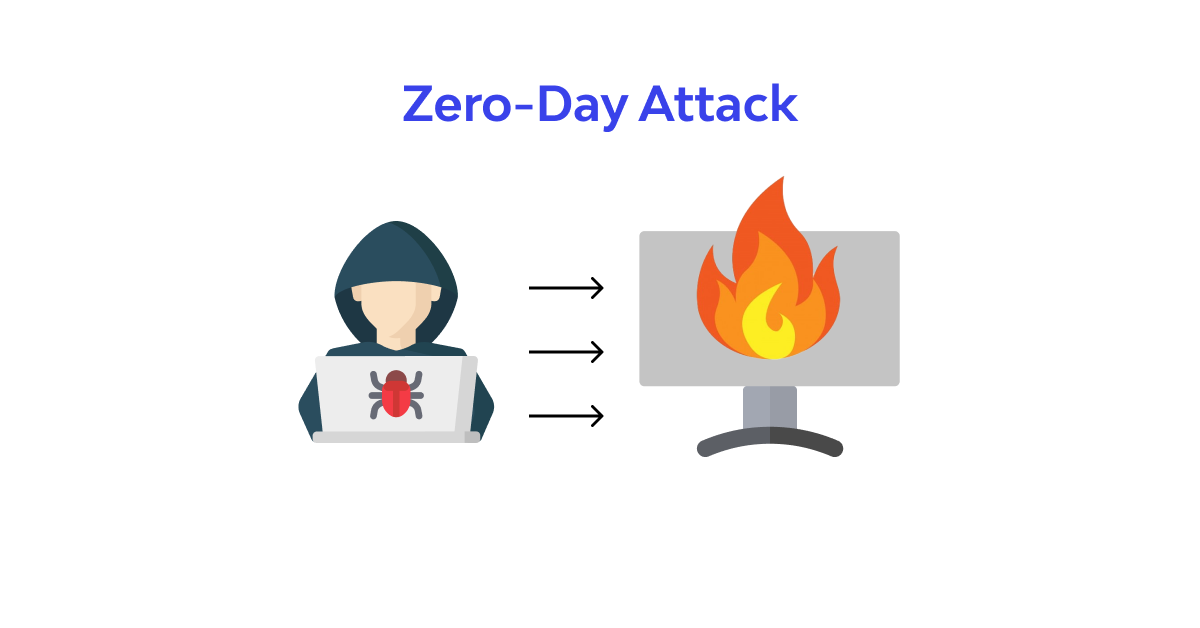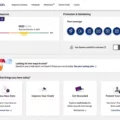Cybersecurity is a growing concern for organizations of all sizes, and zero-day exploits are one of the most serious threats. A zero-day exploit is an attack that takes advantage of a software vulnerability that has not yet been discovered or addressed by the vendor. This means that the attacker has found and exploited the vulnerability before anyone else is aware of it, giving them a significant advantage over other attackers.
Zero-day exploits can have serious consequences for businesses, as they can be used to steal data, money, or intellectual property. As the name implies, once an exploit is discovered and released, the developer has “zero days” to fix it before attackers start exploiting it. This makes zero-day exploits particularly difficult to defend against as organizations do not have time to patch their systems before they are attacked.
The best way to protect against zero-day exploits is to ensure your systems are kept up-to-date with the latest patches from vendors and use robust security solutions that employ multiple layers of defense. It’s also important to use strong passwords and multi-factor authentication for all accounts and regularly review your system logs for suspicious activity. Finally, organizations should invest in security awareness training for their employees so they understand how to recognize potential threats and take appropriate action when needed.
Zero-day exploits can be devastating if not addressed quickly and correctly. Organizations must remain vigilant in defending against these threats by staying up-to-date with patches, investing in robust security solutions, implementing strong passwords and multi-factor authentication practices, regularly reviewing system logs for suspicious activity, and educating staff on how to recognize potential threats. Doing so will help ensure that your organization remains secure from cyber attackers looking to take advantage of unknown vulnerabilities.

Example of a Zero-Day Exploit
A zero-day exploit is a type of cyberattack that uses previously unknown software vulnerabilities to gain access to a system. The vulnerability is known as a “zero-day” because there has been no time for developers to address the issue before the attack occurs.
For example, in 2017, the WannaCry ransomware attack took advantage of a zero-day vulnerability in Microsoft Windows operating systems. This exploit allowed malicious actors to take control of computers and encrypt users’ data until they paid a ransom. Fortunately, Microsoft released an emergency patch soon after the attack was discovered, but not before more than 200,000 computers had been infected.
What is a Zero-Day Exploit or Attack?
A zero-day exploit or attack is a type of cyber attack that takes advantage of a software vulnerability before the software vendor or antivirus vendors are aware of it. This means that an attacker has spotted the vulnerability and created an exploit for it quickly, allowing them to launch an attack and gain access to a system before any security measures can be taken. Zero-day attacks are particularly dangerous because they can be difficult to detect and have the potential to cause serious damage to systems, networks, and sensitive data.
What is the Origin of the Term ‘Zero-Day Exploit’?
The term “zero-day” is derived from the fact that the vulnerability has only just been discovered and the vendor or developer has had no time to patch it. This means they have “zero days” to address the flaw before hackers can exploit it. As such, a zero-day attack is when attackers take advantage of this vulnerability before it can be addressed. The term “zero-day” serves as a reminder of how quickly these exploits can occur and how important it is for developers to stay ahead of the curve when it comes to software security.
Risks Associated with Zero-Day Exploits
The risks posed by zero-day exploits are significant and can be highly damaging to businesses. Such attacks take advantage of vulnerabilities in a system that has not yet been identified, meaning organizations remain unaware until it is too late. The risks of zero-day exploits include:
1) Data Breaches: Attackers can use a zero-day exploit to gain access to sensitive data stored on the system, such as financial information, customer records, or intellectual property. This can result in major financial losses and reputational damage.
2) System Compromise: A successful zero-day attack can give the attacker full control of the system, allowing them to install malicious programs or software that they can abuse for their own purposes. Such malicious software could be used to steal data or launch further attacks on other systems.
3) Network Disruption: If a hacker is able to gain access to a network using a zero-day exploit, they could cause serious disruption by disabling systems or deleting critical files. This could lead to significant downtime and lost productivity for an organization.
4) Malware Infections: Zero-day exploits can be used to install malware that allows attackers to gain access to networks and steal information or launch attacks from within the compromised system. This type of malware infection is difficult to detect and remove without specialized tools, leaving organizations vulnerable for long periods of time.
Overall, it is important for organizations of all sizes to ensure they are aware of potential threats such as zero-day exploits in order to protect their critical assets and operations from attack.
Finding Zero Days: How Do Hackers Do It?
Hackers typically find zero-day exploits in a variety of ways. Through reverse engineering, they can uncover weaknesses or vulnerabilities in a system’s code. Hackers can also use automated tools to scan for potential security flaws. Additionally, hackers can purchase zero-day exploits from the underground market. They may also receive them from other hackers or exploit kits that are sold online. Finally, hackers can create their own zero-day exploits by researching how existing software is designed and writing custom code to exploit it.
Finding Zero-Day Exploits
People can find zero-day exploits in a variety of ways. In some cases, an individual may discover the vulnerability by observing suspicious behavior in a program or piece of software. Alternatively, the developer themselves may recognize a vulnerability in their code and report it to the appropriate authorities. Additionally, hackers often use code to exploit zero-day vulnerabilities. Finally, attackers may also find new ways to exploit zero-day by using existing vulnerabilities in popular systems such as Google’s Android mobile operating system.
Understanding Zero-Day in Cybersecurity
Zero-day in cybersecurity is a vulnerability in software or hardware that has gone unnoticed by the developers and security teams. It is so named because it has been 0 days since the vulnerability was discovered, leaving them zero time to react and create a patch or update to fix the issue. This type of vulnerability can be exploited by malicious actors, putting data, systems, and networks at risk. As such, it is important for developers to regularly monitor their products for any new vulnerabilities and work quickly to patch them before they can be exploited.
Understanding the Difference Between Zero-Day and Vulnerability
No, a zero-day is not the same as a vulnerability. A vulnerability is an existing security flaw or weakness in a system, program, or network that could be exploited by a malicious actor. A zero-day is a type of attack that exploits this vulnerability before the system administrators or developers become aware of it. When bad actors are able to successfully develop and deploy malware that targets the zero-day vulnerability, it is referred to as a Zero-Day attack. As a result of exploiting the vulnerability, the bad actors get unauthorized access to sensitive data and/or critical systems.
The Threat of Zero-Day Exploits
Yes, zero-day is a real threat. A zero-day attack is an exploit that takes advantage of a vulnerability in your computer or mobile device’s software or hardware before it is known to the vendor or security community. This means that there are no existing security measures to protect against the attack, making it particularly dangerous. A successful zero-day attack can allow hackers to access confidential data, install malicious programs on your system, take control of your device, and more. It is important to take steps to protect yourself against these attacks by regularly patching your software and operating system with the latest security updates.
Defending Against Zero-Day Attacks
The best way to defend against zero-day attacks is by taking a multi-layered approach. First, make sure that all of your systems and software are up to date with the latest patches and security updates. This will help to close any existing security holes that could be exploited by attackers. Second, consider using a suite of security solutions like antivirus, anti-malware, and firewalls to protect your system from malicious activities. Third, ensure that you follow safe online practices such as avoiding clicking on unfamiliar links or opening suspicious emails. Finally, educate yourself on the most common attack vectors used by attackers so you can better identify potential threats and take appropriate action to protect yourself.
Preventing Zero-Day Exploits
Zero-day exploits are difficult to prevent, but there are steps organizations can take to reduce the risk of a successful attack. The most important step is to keep software and systems updated with the latest security patches. It is also important to invest in strong cybersecurity solutions that can detect and block suspicious activity. Additionally, organizations should be sure to regularly scan their systems for vulnerabilities and assess their networks for potential weak points. Finally, user education on cyber threat awareness is key in helping employees recognize malicious activity and take appropriate action. By following these steps, organizations can significantly reduce the risk of a successful zero-day exploit.
Conclusion
In conclusion, zero-day exploits are a serious threat to businesses and organizations. They are software vulnerabilities that have not yet been discovered or addressed, leaving them vulnerable to malicious attacks. These attacks can cause significant damage, such as data theft or disruption of service, and can be difficult to detect and prevent. Organizations should take steps to ensure they are aware of any potential zero-day exploits and take measures to mitigate the risk of attack. By taking proactive steps such as regularly updating their systems with the latest security patches, implementing strong access controls, and monitoring for suspicious activity, organizations can help protect themselves from these malicious threats.








